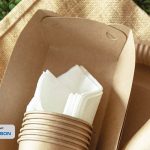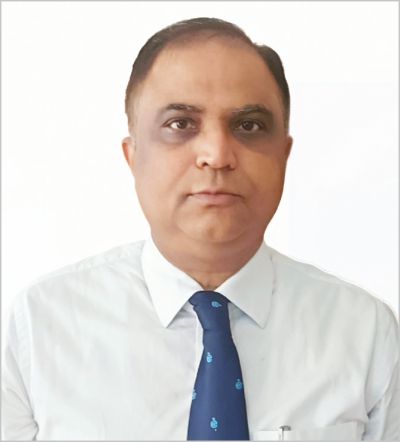
Ion Exchange provides comprehensive, integrated solutions to diverse industries from automotive and textile to power pulp and paper and many more. Leveraging its extensive experience and technological prowess, coupled with robust research and development capabilities, it has established a strong foothold in the paper industry. Its solutions add value across the entire water circuit – on supply, quantity, quality and discharge fronts.
Solutions to enhance water efficiency of mills
Ion Exchange is a pioneer of water treatment in India with a legacy spanning over sixty years. With sales, production and service footprints across the world. It provides a two-pronged approach to meet the above goals:
- Optimizing good manufacturing practices for which Ion Exchange provides speciality process chemicals (dry and wet end chemicals) which not only improve the quality and efficiency through increased processing yields but also reduce consumption of water in the manufacturing process.
- Providing advanced water and waste treatment technologies beginning with a complete appraisal of water consumption through a comprehensive water audit which is followed by substituting conventional treatment with advanced technologies and modern integrated water management processes that ensure source reduction, product recovery, waste minimization and water reuse.
Moreover, Ion Exchange continues to spearhead innovations tailored for the paper industry. Its notable advancements include the Indion® Ultra High Rate Solid Contact Clarifier (UHRSCC) and a suite of Demineralization technologies, comprising the Indion® Swift Demineralizers and Indion® Layer Bed Demineralizers. Additionally, offerings such as the Indion® Continuous Sand Filters, ‘Easy As Be’ Tall Anaerobic Reactor and Zero Liquid Discharge solutions underscore its commitment to pioneering efficiency and sustainability in the paper manufacturing landscape.
The company’s new offerings include 1) Advance Oxidation Technology – TADOX® recently licensed from TERI that addresses the gap and challenges in treating complex effluents produced by the paper industry in a very cost effective way without using chemical or generating excessive sludge and 2) Our IonSite digital solutions, which leverage digital technologies and data analytics to monitor real time performance of water assets, enhance operational efficiencies and ensure continuity of operations without unplanned breakdowns.
Watch: Top Paper Companies 2023
Currently, mills have achieved significant reductions in water consumption, with Integrated mills lowering consumption from 200 KL to 70 KL per ton and RCF mills reducing it from 120 KL to 30-40 KL per ton. This 60-70% reduction is attributed to in-house optimization and technology adoption.
How solutions have helped mills achieve their water efficiency target
At the Pre-Treatment stage, its INDION® range of products like Lamella Clarifier, Ultra High Rate Solids Contact Clarifier (UHRSCC), Continuous Sand Filter (CSF), Multigrade Filter (MGF) & Ultra Filtration process are the first choice for reducing high turbidity and suspended solids in the water source. These space-saving, efficient systems reduce the high suspended solids load to acceptable levels as feed for make-up water treatment systems. Ion Exchange received orders through a turnkey contract for Pretreatment, Demineralization and condensate polishing plant from one of the largest pulp mills in the world residing in Indonesia which today stands at a capacity of 777 MLD.
Process water treatment: Ion Exchange has also designed and engineered Demineralization and Condensate Polishing plants at one of the largest pulp and paper complexes in Indonesia having a capacity of 3.30 million tonnes of pulp and paper including leaf bleached Kraft pulp.
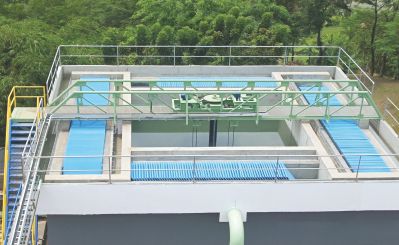
Effluent Treatment with Resource Recovery was implemented for one of the largest business conglomerates in the ASEAN region with diverse business interests. As a group committed to the highest standards of sustainability and environmental consciousness, they chose Ion Exchange (India) Ltd. to build an advanced wastewater treatment facility for complex paper effluent treatment with resource recovery for their paper mill. The process treatment achieves an overall COD and BOD reduction as high as 98%. Since the ECSB process allows the high rate anaerobic reactor to operate completely in pressurized conditions, foul smell and odour is eliminated thereby meeting the stringent environment norms of air emissions and liquid discharge.
White Water Recycle: A large pulp and paper manufacturing unit in India faced problems in treating “White Water”, a term for process waste water containing fine particulate matters, fibres and fillers like titanium dioxide used in the speciality paper making process.
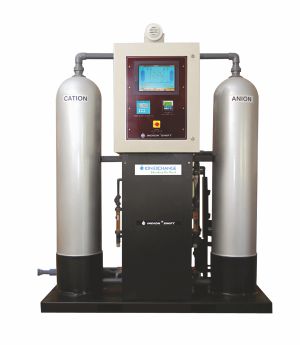
Ion Exchange has installed a White Water Recycling system with capacity 11,000 m3/d for recovery of water, fibres and fines and reusing them in the paper manufacturing process. The recovery process utilizes High Rate Solids Contact Clarifier and Continuous Sand Filter along with speciality coagulants and flocculants for enhancing solids recovery. Thus the client could achieve 98% water recovery with less than 5 ppm of suspended solids allowing the treated white water to be reused directly in the paper mill without clogging the showers. 99% fibres, which are also recovered, are reused in papermaking thus helping to meet the circular economy goals of the paper industry.
Clients and factors usually identify before collaborating
Leveraging its extensive experience and technological prowess, coupled with robust research and development capabilities, it has established a strong foothold in the paper industry. Its deep understanding of customer processes allows the company to offer comprehensive and sustainable solutions across the entire value chain of paper manufacturing.
In selecting clients, it prioritizes those who can derive maximum benefit from its expertise and innovative solutions, while sharing commitment to sustainability and innovation. The company’s clientele includes prominent industry players both domestically and internationally, reflecting ability to cater to diverse needs on a global scale.
Furthermore, its collaborative ethos extends to a proactive identification of factors critical to successful collaboration. These factors encompass not only technical requirements and project scope but also considerations such as environmental impact, regulatory compliance, and long-term sustainability. By integrating these elements into a collaboration framework, the company ensures that its solutions not only meet immediate needs but also contribute to the broader objectives of clients’ and the industry as a whole.
Ion Exchange continues to spearhead innovations tailored for the paper industry. Its notable advancements include the Indion® Ultra High Rate Solid Contact Clarifier (UHRSCC) and a suite of Demineralization technologies
New innovations
Indion® Ultra High Rate Solids Contact Clarifier (UHRSCC):This compact, efficient and low cost clarifier combines processes like mixing, flocculation and sedimentation in a single basin. These modular designed units can handle high inlet suspended solids up to 3000 mg/I while giving consistent treated water quality of less than 10 mg/I and sludge concentration up to 3%. This results in elimination of the downstream thickeners further reducing the capital, operating cost and footprint of overall clarification processes.
Indion® External Circulation Sludge Bed (ECSB): It uses advanced engineering material for the internal phase separation of anaerobic sludge, water and biogas. It is constructed using bolted steel plates in a tall configuration thereby further reducing the footprint whilst optimizing bio energy generation, producing treated effluents of the highest quality, reducing the footprint, and life cycle cost of downstream aerobic systems. ECSB process coupled with wide options of INDION Aerobic processes (ASP/ MBBR / SBR / MBR) + INDION Membrane Processes (UF / RO) + INDION MEE provides cost effective, proven, turnkey solutions for the pulp and paper industry.
Zero Liquid Discharge (ZLD): The recycle & zero liquid discharge systems integrate physico-chemical, biological and membrane separation processes for optimum water recovery. These are integrated with its state-of-the-art Multi-Effect Evaporator (MEE) to ensure compliance with strict discharge norms and achieve excellent payback on investment.
Indion® Tadox®: Recently licensed from TERI, it is an innovation in treating complex industrial wastewater with the flexibility of integrating INDION® TADOX® at the secondary treatment stage – at the pre-biological stage or prior to membrane processes. This Advanced Oxidation Process (AOP) using the principle of a unique and patented photo catalysis process leads to oxidative degradation and mineralization of targeted pollutants resulting in removal of colour, dissolved organics, recalcitrant organics (RCOD) in wastewater streams.
IonSite Digital Twin: It enables plant operators to monitor and optimize the performance of their plants in realtime with real time analytics prediction and prescription to mitigate failures. IonSite Digital Twin uses process models including algorithms and statistical methods to analyse and draw inferences from patterns in data, to ‘learn’ how the actual plant operates and deliver accurate near term forecasting.
Also Read: A Better Alternative the World Needs
The Future
In the next five years, Integrated Pulp and Paper mills and recycled fibre based mills are expected to further improve water efficiency. Currently, these mills have achieved significant reductions in water consumption, with Integrated mills lowering consumption from 200 KL to 70 KL per ton and RCF mills reducing it from 120 KL to 30-40 KL per ton. This 60-70% reduction is attributed to in-house optimization and technology adoption.
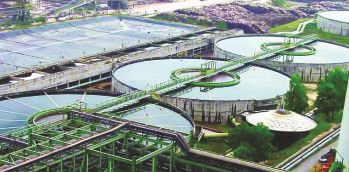
However, increasing Total Dissolved Solids (TDS) pose a challenge for further reductions. To address this, mills are exploring Reverse Osmosis (RO) and Mechanical Evaporation (MEE) for Zero Liquid Discharge (ZLD) systems, aiming for 95% water recovery. Solid waste disposal remains critical, driving ongoing efforts to enhance water efficiency. With continued innovation and investment in advanced technologies, mills are poised for greater water efficiency. Ion Exchange aims to support this journey by providing innovative solutions for enhanced water sustainability.


